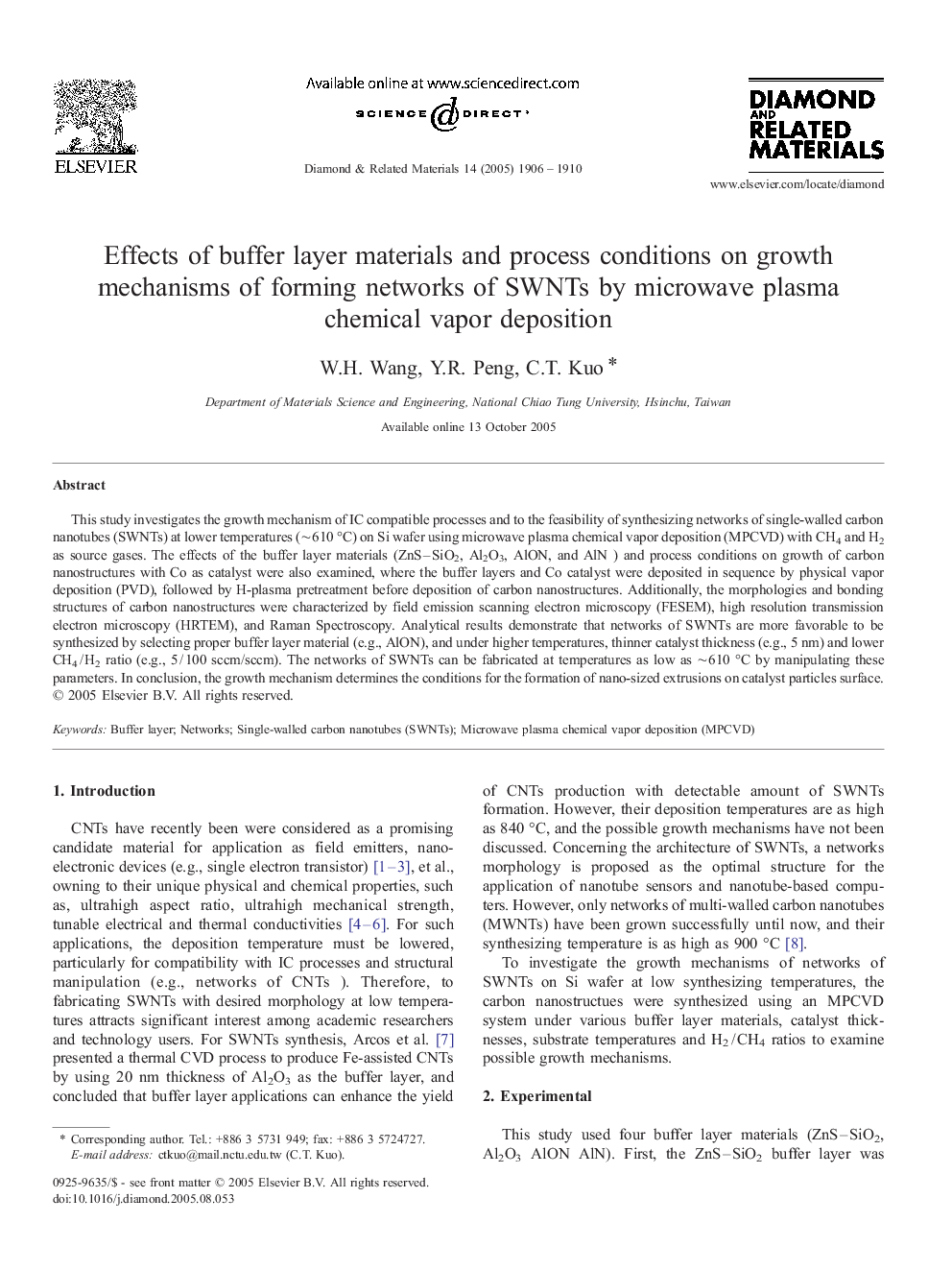| Article ID | Journal | Published Year | Pages | File Type |
|---|---|---|---|---|
| 702486 | Diamond and Related Materials | 2005 | 5 Pages |
This study investigates the growth mechanism of IC compatible processes and to the feasibility of synthesizing networks of single-walled carbon nanotubes (SWNTs) at lower temperatures (∼610 °C) on Si wafer using microwave plasma chemical vapor deposition (MPCVD) with CH4 and H2 as source gases. The effects of the buffer layer materials (ZnS–SiO2, Al2O3, AlON, and AlN ) and process conditions on growth of carbon nanostructures with Co as catalyst were also examined, where the buffer layers and Co catalyst were deposited in sequence by physical vapor deposition (PVD), followed by H-plasma pretreatment before deposition of carbon nanostructures. Additionally, the morphologies and bonding structures of carbon nanostructures were characterized by field emission scanning electron microscopy (FESEM), high resolution transmission electron microscopy (HRTEM), and Raman Spectroscopy. Analytical results demonstrate that networks of SWNTs are more favorable to be synthesized by selecting proper buffer layer material (e.g., AlON), and under higher temperatures, thinner catalyst thickness (e.g., 5 nm) and lower CH4 / H2 ratio (e.g., 5 / 100 sccm/sccm). The networks of SWNTs can be fabricated at temperatures as low as ∼610 °C by manipulating these parameters. In conclusion, the growth mechanism determines the conditions for the formation of nano-sized extrusions on catalyst particles surface.
